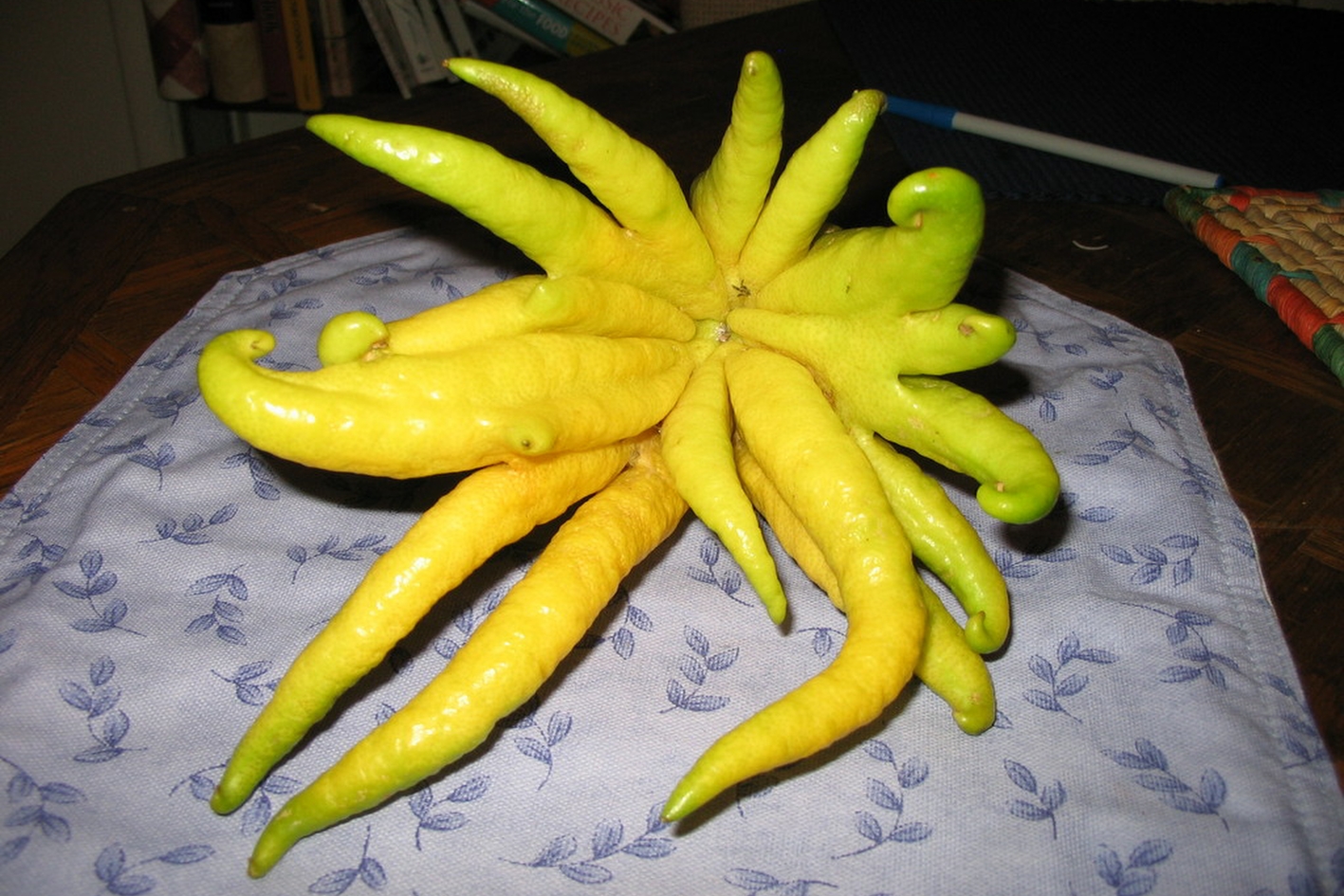
Unveiling a captivating enigma
" highly prized in culinary circles for this potent flavour and its aromatic qualities "
In the realm of citrus fruits, this fragrant marvel stands out as a captivating enigma. The peculiar appearance of Buddha’s Hand resembles multiple yellow fingers extending from a central base. It offers a sensory experience unlike any other and is primarily valued for its aromatic zest. Not only in culinary creations but also in perfumes and infused spirits, Buddha’s Hand adds a touch of exotic allure to every encounter.
Believed to have originated in Northeastern India or China, Buddha’s Hand is cultivated in regions with warm climates, including parts of Asia, California, and the Mediterranean. Named for its resemblance to the hand gestures of Buddha statues, this citrus wonder has a rich history steeped in symbolism and tradition.
At first glance, Buddha’s Hand may seem like a whimsical creation, with its elongated, finger-like protrusions. The fruit’s rind is thick and fragrant, emitting a sweet, citrusy aroma which fills the air with hints of lemon and floral notes. Whilst the flesh of Buddha’s Hand is not typically consumed due to its lack of juice and seeds, the zest is prized for its intense flavour and aroma.
Buddha’s Hand zest is highly prized in culinary circles for this potent flavour and its aromatic qualities. It adds a burst of citrusy brightness to a variety of dishes, including desserts, salads, and seafood. Chefs also use it to infuse oils, vinegars, and syrups, enhancing both depth and complexity of their creations. Additionally, Buddha’s Hand zest is a popular ingredient in perfumery, imparting a fresh, invigorating scent to fragrances and cosmetics.
Beyond its culinary and aromatic uses, Buddha’s Hand is revered for its potential health benefits. Rich in antioxidants and vitamin C, this citrus fruit may support immune function, promote skin health and aid digestion. Its uplifting fragrance is also believed to have mood-boosting and stress-relieving properties, making it a popular ingredient in aromatherapy practices.
Buddha’s Hand holds cultural significance in various traditions and rituals. In some cultures, it is considered a symbol of good fortune, prosperity and longevity, often displayed in homes or temples as a talisman of luck and protection.
A testament to nature’s boundless creativity, Buddha’s Hand offers a sensory journey through its captivating appearance and fragrant zest. Whether admired for its ornamental beauty, savoured for its culinary versatility, or cherished for its aromatic essence, it continues to captivate hearts and minds around the world, embodying the essence of exotic allure and timeless elegance.
Prepared by a Chaîne News Online Staff Writer
Researched from various sources. E&OE